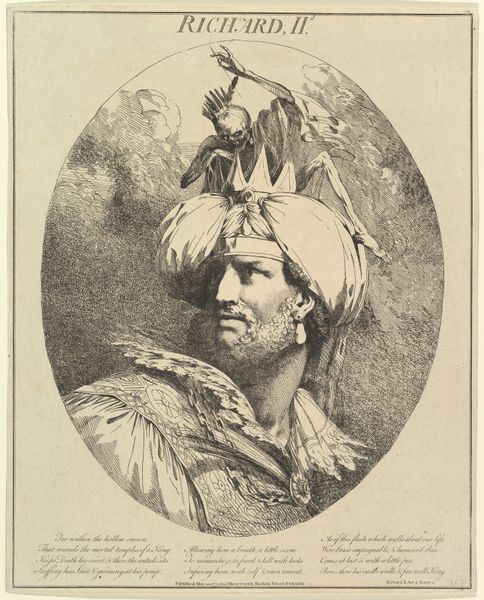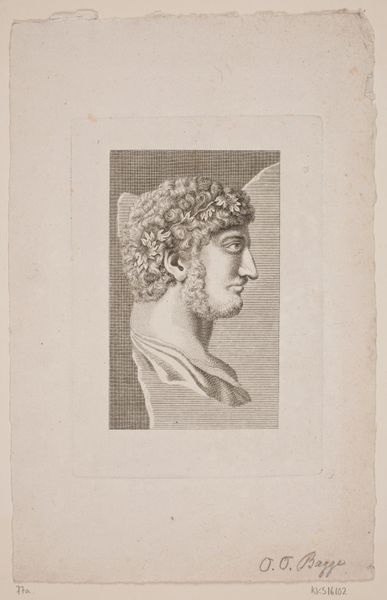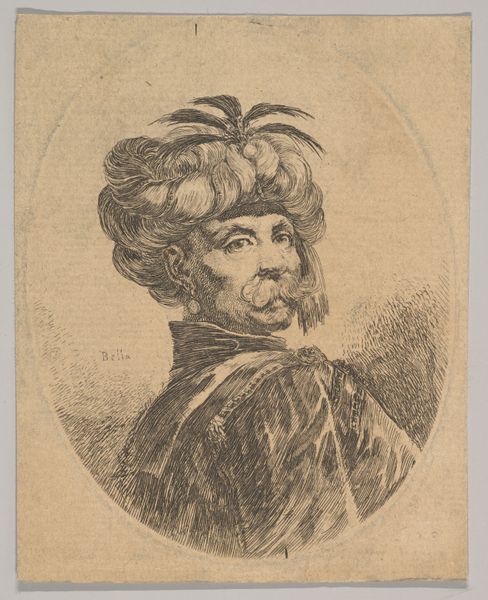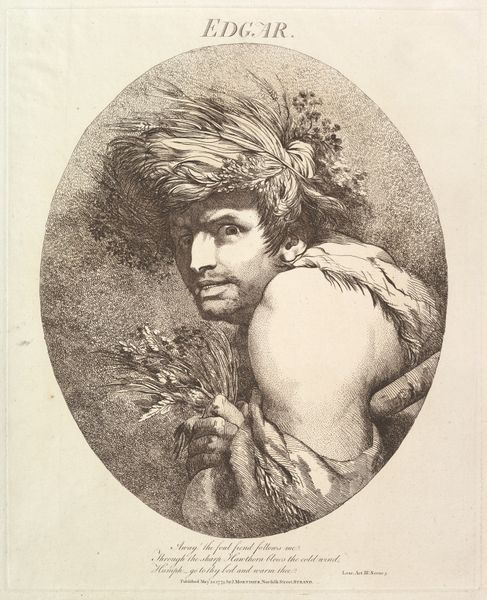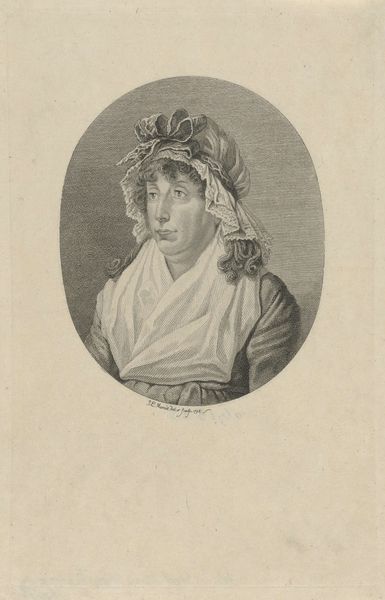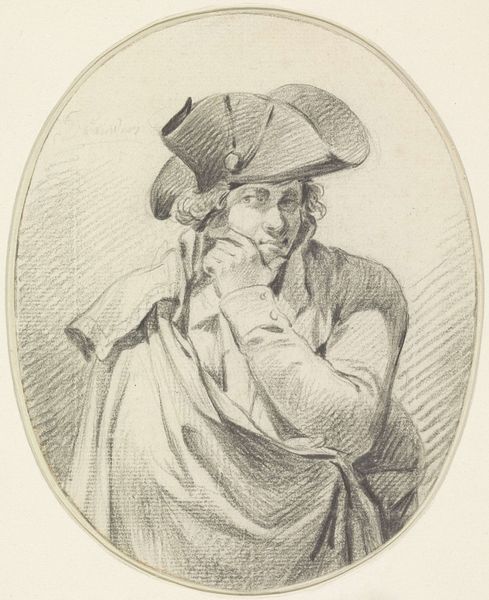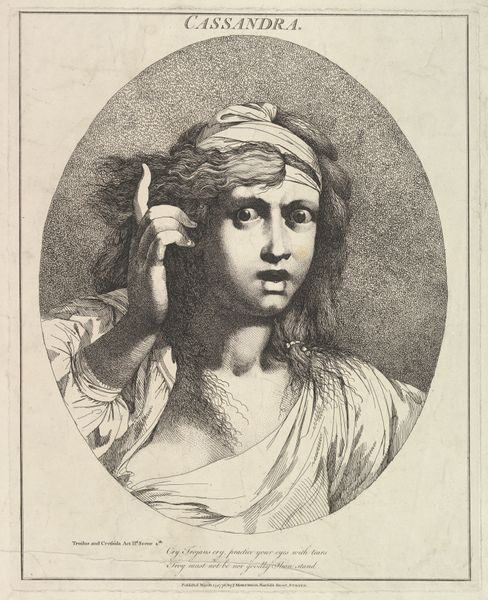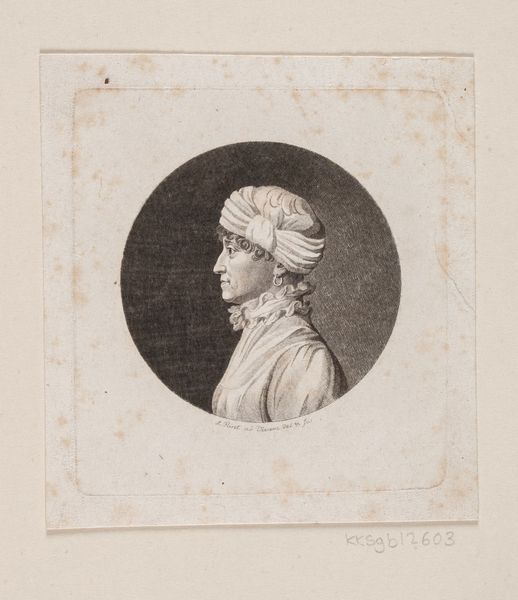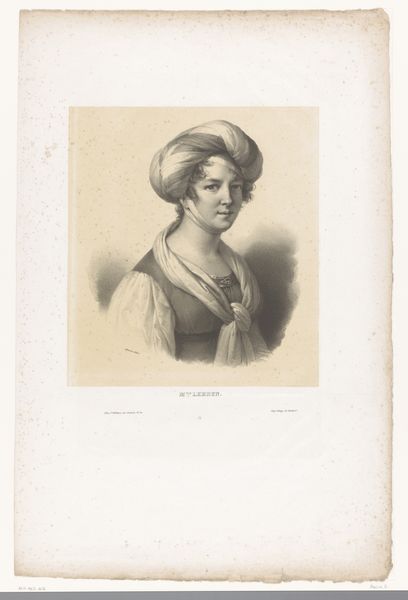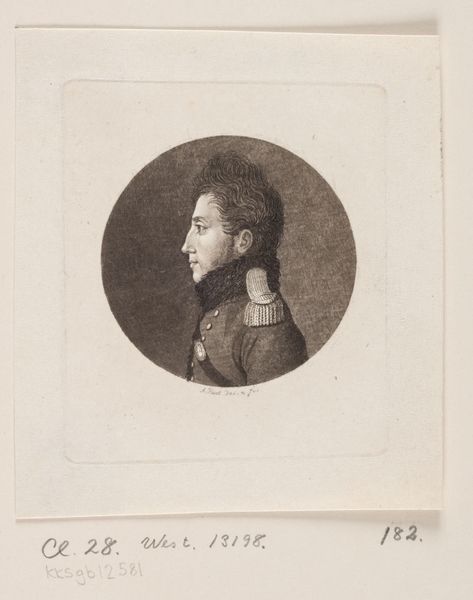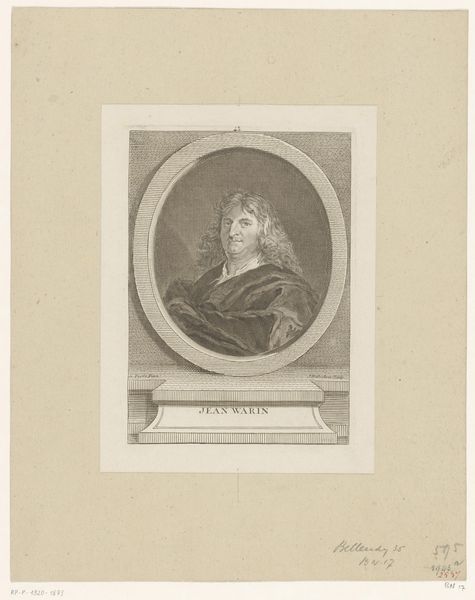
Ophelia (from "Twelve Characters from Shakespeare") 1775
0:00
0:00
Dimensions: Plate: 15 7/8 x 12 7/8 in. (40.4 x 32.7 cm) Sheet: 21 1/4 x 16 in. (54 x 40.6 cm)
Copyright: Public Domain
Editor: This is "Ophelia," a print made by John Hamilton Mortimer in 1775, part of his series "Twelve Characters from Shakespeare." It's a somber and affecting portrayal, capturing Ophelia’s delicate sadness. I'm struck by how Mortimer depicts her in this close-up oval, adorned with flowers and looking off to the side with a sense of sorrowful anticipation. What insights can you offer about the historical context or public reception of this work? Curator: It’s a fascinating example of the growing cultural fascination with Shakespeare in the late 18th century, and the emergent Romantic sensibility. Mortimer capitalizes on Ophelia’s tragic narrative, a character already burdened with a certain cultural weight. What’s interesting here is how the work functions publicly; consider it within the burgeoning print market of the time. These prints, distributed widely, reinforced certain interpretations of Shakespeare and particularly his female characters. The text beneath further locks the reading within the sphere of the scene. How might a wider audience's existing perceptions of female madness shaped their interpretation of the image, do you think? Editor: That’s a good point. Her representation is very much tied to the prevailing views about female fragility and the societal pressures she faced. So, this image wouldn't just be a reflection of Shakespeare's play, but also of the anxieties of the period? Curator: Exactly! Mortimer's "Ophelia" also engages with the increasing interest in the dramatic and emotional potential of history painting, adapting it for a print format and a wider audience. These images circulated in drawing rooms and print shops, solidifying narratives and reinforcing the socio-political context, rather than passively mirroring literature. How might it have differed, as an image, from theatre stage versions? Editor: I see. In this image, viewers engage more directly with Ophelia's psychological interiority. The composition of the oval framing almost turns her image into a keepsake, driving further the connection and intimacy the viewer would feel. This has broadened my understanding considerably. Thank you! Curator: My pleasure. The politics of imagery in Romanticism offers a rich landscape. Now you can understand the depth of that landscape too.
Comments
No comments
Be the first to comment and join the conversation on the ultimate creative platform.
